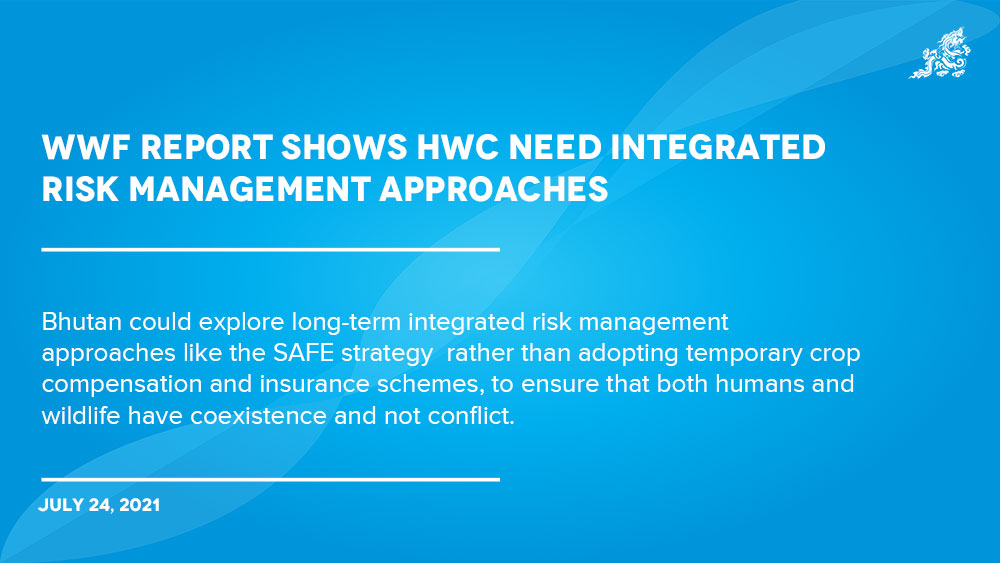Choki Wangmo | Tsirang
Bhutan could explore long-term integrated risk management approaches like the SAFE strategy rather than adopting temporary crop compensation and insurance schemes, to ensure that both humans and wildlife have coexistence and not conflict.
According to World Wildlife Fund’s (WWF) forests and wildlife programme leader, Nagdrel Lhamo, despite the complexities of human-wildlife conflict (HWC), effective HWC management must occur for the benefit of the stakeholders involved. “We all jump to the conclusion that animals are the ones causing harm to humans and property.”
The SAFE system management is a holistic approach that involves making the system—people, wildlife, livestock, and habitat— safe.
The approach assesses conflicts in a landscape through a structured stakeholder consultation process which allows managers, decision-makers, and practitioners to develop HWC strategies that gradually remove immediate risks.
Findings of the WWF’s recent report on HWC, titled, “Future for all: the need for human-wildlife coexistence”, states that while complete eradication of HWC is impossible, a well-planned, integrated management approaches can reduce conflicts and lead to coexistence between people and animals. “Such approaches require work on prevention, mitigation, response, research, and monitoring backed by strong policy support and the participation of local communities.”
The report that featured contributions from 155 experts from 40 organisations based in 27 countries states that despite being strongly linked to the Sustainable Development Goals, HWC continues to be overlooked by policymakers.
Reducing HWC through integrated approaches, the report states, lead to opportunities and benefits not only for biodiversity and impacted communities, but for society, sustainable development, production, and the global economy at large. “HWC is as much a development and humanitarian issue as it is a conservation concern, affecting the income of farmers, herders, artisanal fishers, and indigenous peoples, particularly those living in poverty.”
HWC interferes with access to water for communities competing with wildlife for local water sources and drives inequality as those who pay the price for living with wildlife rarely receive the benefits of coexistence, it states.
According to the findings, conflict-related killing affects more than 75 percent of the world’s wild cat species, and terrestrial and marine carnivore species such as polar bears and Mediterranean monk seals, and large herbivores such as elephants.
Nagdrel Lhamo said that HWC is inevitable in Bhutan considering communities’ proximity to forests.
One of the measures to skillfully tackle HWC, she said, is by maintaining a database through SMART (spatial monitoring and reporting tool) to understand the conflict.
“Encroachment into the habitats is one of the main causes of conflict. A spatial land use plan would be critical to managing the conflict,” she said.
Edited by Tshering Palden


